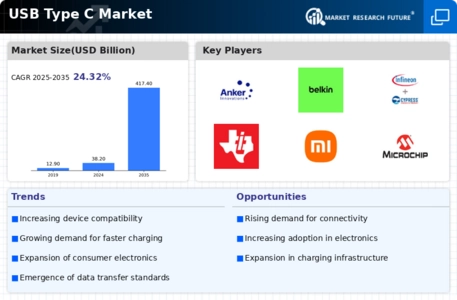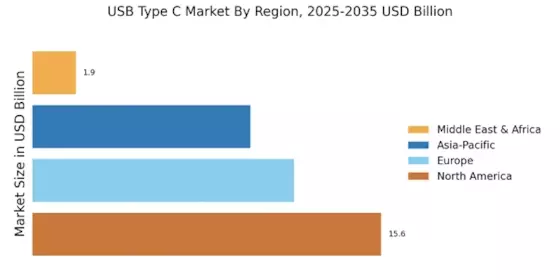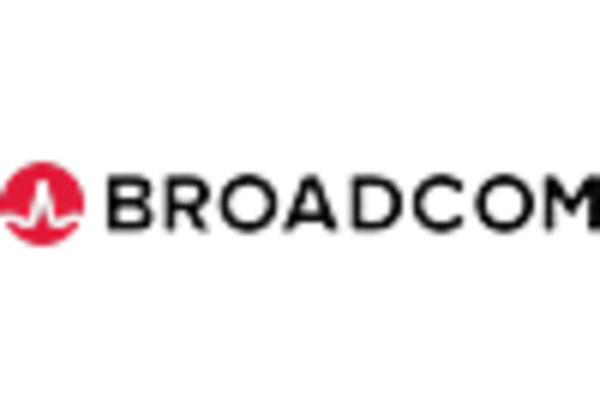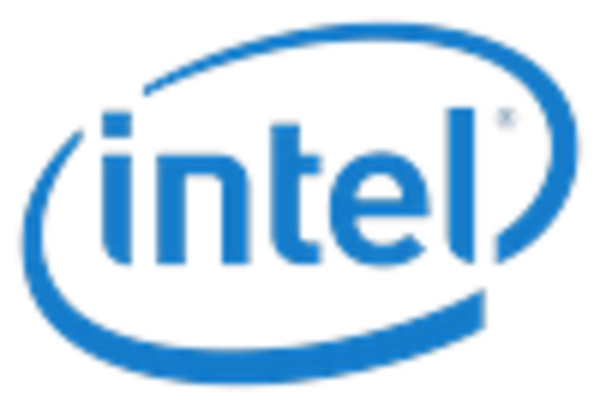Growth in Mobile Device Market
The USB Type C Market is significantly influenced by the growth in the mobile device market. As smartphones and tablets continue to dominate consumer electronics, the demand for efficient charging and data transfer solutions escalates. USB Type C Market connectors, with their reversible design and high power delivery capabilities, are increasingly adopted by manufacturers to enhance user convenience. Recent data indicates that the smartphone market is projected to reach over 1.5 billion units by 2026, with a substantial portion expected to feature USB Type C Market ports. This trend not only reflects consumer preferences for faster charging and data transfer but also highlights the competitive landscape among manufacturers striving to meet these demands. The growth in the mobile device market thus serves as a critical driver for the USB Type C Market, as it shapes product development and innovation.
Standardization Across Industries
The USB Type C Market benefits from a trend towards standardization across various sectors. As industries strive for interoperability and compatibility, the adoption of USB Type C Market connectors becomes increasingly prevalent. Regulatory bodies and industry leaders advocate for standardized charging and data transfer solutions, which enhances consumer convenience and reduces electronic waste. For instance, the European Union has proposed legislation to mandate USB Type C Market as the common charging standard for mobile devices. This regulatory push is likely to accelerate the transition to USB Type C Market technology, as manufacturers adapt to comply with new standards. The standardization trend not only simplifies the user experience but also fosters innovation within the USB Type C Market, as companies invest in developing products that align with these emerging norms.
Integration in Emerging Technologies
The USB Type C Market is witnessing integration into emerging technologies, which appears to be a pivotal driver of growth. As industries evolve, the need for versatile and efficient connectivity solutions becomes paramount. USB Type C Market connectors are increasingly utilized in devices such as laptops, smartphones, and tablets, as well as in innovative applications like virtual reality and augmented reality systems. The versatility of USB Type C Market, which allows for power delivery, data transfer, and video output through a single port, positions it as a preferred choice for manufacturers. Furthermore, the rise of the Internet of Things (IoT) and smart devices necessitates standardized connections, further propelling the adoption of USB Type C Market technology. This integration into cutting-edge technologies suggests a promising future for the USB Type C Market, as it aligns with the growing demand for multifunctional connectivity solutions.
Rising Demand for High-Speed Data Transfer
The USB Type C Market experiences a notable surge in demand for high-speed data transfer capabilities. As technology advances, consumers and businesses alike seek faster and more efficient ways to transfer data. USB Type C Market connectors support data transfer rates of up to 40 Gbps, which is significantly higher than previous standards. This capability is particularly appealing to professionals in fields such as video editing and graphic design, where large files are commonplace. The increasing reliance on cloud storage and the need for quick data synchronization further drive this demand. Consequently, manufacturers are focusing on integrating USB Type C Market technology into their devices, thereby enhancing the overall user experience. This trend indicates a robust growth trajectory for the USB Type C Market, as more devices adopt this standard to meet consumer expectations.
Increased Focus on Environmental Sustainability
The USB Type C Market is experiencing a heightened focus on environmental sustainability, which appears to be a significant driver of change. As consumers become more environmentally conscious, there is a growing demand for products that minimize electronic waste and promote sustainable practices. USB Type C Market connectors, which facilitate the use of fewer cables and chargers, align with this trend by reducing the overall environmental footprint of electronic devices. Manufacturers are increasingly adopting eco-friendly materials and production processes to appeal to this demographic. Additionally, the potential for USB Type C Market technology to support energy-efficient charging solutions further enhances its appeal in a market that prioritizes sustainability. This focus on environmental considerations is likely to shape the future of the USB Type C Market, as companies strive to innovate while adhering to sustainable practices.

















Leave a Comment